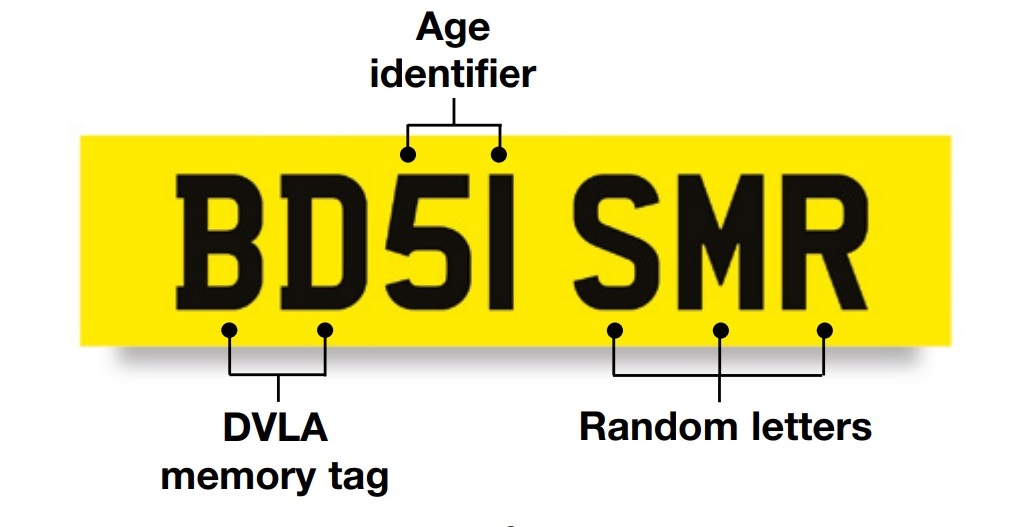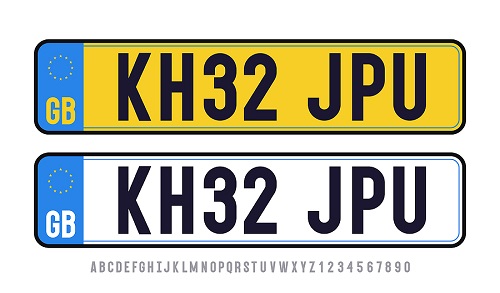March heralded the introduction of a new registration number for Britain’s cars. But what is the unique plate marking for, and what does it all mean?
The dawn of a new number plate on British cars used to be a much-anticipated, once-a-year event. Customers would take delivery of their new car on 1st August – sometimes at midnight from their local dealership – and enthusiasts would be on the look-out for the latest prefix number for weeks afterwards.
Today, the excitement and furore surrounding a number plate change is not what it used to be. For a start the change of number – or age identifier – on a licence plate happens twice a year now, in March and September, instead of once and secondly, brand new cars are now a more common sight on our roads. So seeing the latest plate is not such a big prize for keen motor fans.
Vehicle registration plates, or ‘number plates’, are an important part of motoring law and have existed since 1904. It is illegal to drive a car in the UK without a valid and properly displayed number plate, front and rear. Without one, your car will fail the annual MOT test and, if the police spot you on the road with a plate missing, you could be fined up to £1,000.
Licence plates must be white at the front of the vehicle and yellow at the back with black lettering 79mm tall and 50mm wide. They make tracing of vehicles (and their drivers) easier in the event of an accident, dangerous or illegal driving or any other offence that involves a vehicle, such as a ‘getaway car’ in a robbery.
In the past a letter of the alphabet was used to signify a car’s age, or date of registration. Today the system relies on a double-digit number. For March this year it’s 23 (meaning early 2023) while in September the prefix number will change again to 73 (late 2023). Next year will have 24 and 74, and so on.
What do the other letters and numbers mean?

A newly-registered car’s number plate will comprise two letters followed by two numbers and then three more letters. The first two letters signify the region in which the car was registered. There are hundreds of these to include towns, cities and counties across the UK. These two letters are also known as ‘memory tags’ by the DVLA vehicle licensing authority.
The letters CA, for example, signify Cardiff. A vehicle with EA on its plate will come from Essex while Hampshire-based cars show the letters HB (Bournemouth), HP (Portsmouth) and other ‘H’ markings. Not all prefix letters are the initials of their town or county. Northampton carries KS for example, while Maidstone has GA and the Ipswich area will be AV.
The final three letters on the plate are randomly generated to help uniquely identify the vehicle.
Personalised plates

Such is the prominence and importance of number plates that some owners try to alter the look of their numbers and letters to form words or names. Another popular idea is to place the black retaining screws that hold the plate to the car, in a position that changes a digit.
This is illegal and the police take a dim view of it. A reg plate should clearly display the correct numbers and letters to identify the vehicle. Rearranging or ‘misrepresenting’ the licence plate also carries a £1,000 fine and the courts can even take the plate away from you and withdraw it completely.
You can buy ‘cherished’ plates to personalise your motor but you are not allowed to use a licence plate that makes your car seem newer than it really is. So you can’t buy a ‘23’ plate and put it on a 2015 car.
Number plates stay with the vehicle not the driver so, if you have a personalised plate and put it on your car, you have to apply to take it off if you sell it. Then you have to go through the process of applying to put it on your next vehicle.
A means of identification
Registration numbers are there to identify a vehicle and verify the authenticity and validity of a car. That’s why car history checking companies such as Motorcheck investigate the number plate.
Motorcheck also looks to see if a car has had any personalised plates in its past and gets the history of any plate changes that might have happened. That helps to stamp out the chances of buying a vehicle that has been stolen or ‘cloned’ and ensures that if you’re looking to buy one, you have the peace of mind that it is the genuine article.
Put simply, a history check hands you that confidence… on a plate.
